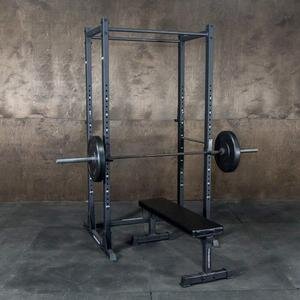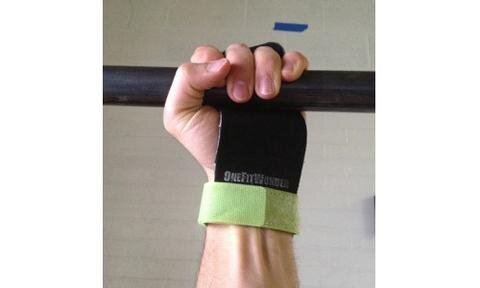A Guide to Pull-ups
Pre-requisite for Kipping Pull-ups: 3 Strict Pull-ups in a Row
It is extremely important for your development not only from an injury perspective, but a performance perspective, that you first develop your mobility, stability, technique, and strength with the strict pull-up. Without this foundation, you are destine to be the perpetual amateur and will risk shoulder injuries. The ability to maintain the proper grip, shoulder stability, and using the correct muscles through the entire movement is key for optimally transferring force from your body into the bar and is should be developed with the strict pull-up.
Free Kipping Pull-up Online Course
Is your kipping pull-up max more more than 3 times your strict pull-up max? Ready to take kipping pull-ups seriously???
Whether you are a beginner looking to get your first kipping pull-up or you are a more advanced athlete looking to increase your max number, the MovementLink Online Kipping Pull-up Workshop is designed to build your foundation of technique to realize your bodies full potential in the C-Kip Pull-up, the Butterfly Kipping Pull-up, and the Kipping Ring Dip. Great Kipping Pull-up program with options and guidance for beginners and to level-up already advanced athletes!
Demos
Strict Pull-ups
C-Kip Pull-ups
Butterfly Pull-ups
Chest-to-bar Strict Pull-ups
Chest-to-bar C-Kip Pull-ups
Chest-to-bar Butterfly Pull-ups
Weighted Strict Pull-ups
Using a Strength Band as Dip Belt Demo
Chin-up Demos:
The only difference in the pull-up and the chin-up is the grip.
Scaling and Substitutions
Are you more of a beginner and don’t know your Max Sets???
Below we’ll provide scaling and modification suggestions based off of a max, unbroken set of an exercise. If you’re more of a beginner and don’t know your max and don’t want to max out right before a workout (you probably shouldn’t), you can estimate it by doing just a few reps:
“Doing 5 reps in a row is a no-brainer and kind of a joke.” - You can probably do 50+ as a max set.
“Doing 5 reps in a row is easy, not hard in any way, but not a joke".” - You can probably do 20 - 30 reps as a max set.
“Doing 3 reps in a row is easy, but reps 4 and 5 are a little hard.” - You can probably do 10-20 reps as a max set.
“I can do 3 reps, but each one is hard.” You can probably do 3-10 reps as a max set.
Reduce the Reps
Reducing the reps, both when you are a beginner and even as you become advanced, in a workout is very hard for some people to accept, but if we are gong to learn new skills, sometimes we need to bring the reps down a bit and work out with rep ranges that are within our current capabilities. In the long-run, this will make you so much better! If we can get the number of reps in ideal ranges, we can maximize progress we make. More is not better. The right amount will optimize our results and get us to where we want to be faster. Sometimes, we have to leave the ego at the door and train. Advanced CrossFitters will be able to perform 50-100+ kipping pull-ups with good technique.
If you have:
30+ Unbroken Kipping Pull-ups - Do the workout as Prescribed.
20-30 Unbroken Kipping Pull-ups - Do 75% of the reps in each set. Example: Change 100 Kipping Pull-ups to 75 Pull-ups.
10-15 Unbroken Kipping Pull-ups - Do 50% of the reps in each set. Example: Change 100 Kipping Pull-ups to 50 Pull-ups.
Less than 10 kipping pull-ups, focus more on building the foundation of strength by using one of the below variations.
Strict Pull-ups
Strict Pull-ups can be great for a number of reasons. If you don’t yet have the mobility, stability, technique, or strength to maintain good positions for the kip swing, strict pull-ups can be an amazing tool. Strict Pull-ups are harder, strength-wise, than kipping pull-ups, so if we are going to substitute kipping pull-ups for strict pull-ups, we will need to modify the total number of reps. Typically, advanced athletes should be able to do 3x or more kipping pull-ups than strict pull-ups. Something to note however, the higher strength requirement of strict pull-ups has a very different metabolic effect than kipping pull-ups which will get us out of breath more. We always want to keep the desired stimulus of the workout in mind as we scale and this is something to consider. Banded Pull-ups and Jumping pull-ups can provide less of a strength stimulus and provide more of cardio stimulus, so even if you are strong enough, sometimes it may be a good idea to play around with other scaling variations.
15+ Unbroken Strict Pull-ups - Do 40% of the reps in each set. Example: Change 100 Kipping Pull-ups to 40 Strict Pull-ups.
10-15 Unbroken Strict Pull-ups - Do 30% of the reps in each set. Example: Change 100 Kipping Pull-ups to 30 Strict Pull-ups.
5-10 Unbroken Strict Pull-ups - Do 20% of the reps in each set. Example: Change 100 Kipping Pull-ups to 20 Strict Pull-ups.
If you have less than 5 unbroken strict pull-ups, scaling with a below option will be best.
Banded Strict Pull-ups
Banded Strict Pull-ups are an amazing tool to develop technique and strength that uses the body and the shoulder in a way specific to the pull-up. As you pull-up, because of the elastic nature of the band, the pull-up actually gets harder and harder as the band provides less and less help. In strength training, this is called accommodating resistance and can be a very powerful tool in developing power. So, not only does the band unload some of our body-weight allowing us to get some help with the movement, instead of slowing down to a stop at the top, it actually tricks and trains your brain and muscles to fire harder and harder through the movement. Now, when we remove the bands, the hardest part of the movement, the top, has been trained more than the bottom position with provides us an excellent foundation to progress into harder variations.
As a beginner, we want to start with a band (or combination of bands) that allows us to do 30+ banded pull-ups in a row, so 5 in a row should be easy and not hard in any way.
From there, once we develop confidence, technique, and strength, we will use less band and adjust the reps and do 50% of the reps in each set. So we would change 100 Kipping Pull-ups to 50 Banded Pull-ups with our new band.
From there, once we develop confidence, technique, and strength, we will adjust the reps and do 75% of the reps in each set. So we would change 100 Kipping Pull-ups to 75 Banded Pull-ups with our new band.
From there, (I bet you can see where this is going;) we will adjust the reps and do 100% of the reps in each set putting us back at step 1. Then we will repeat over and over again until we have progressed out of the bands.
For some, we are not yet at the level where we can do banded pull-ups without an amount of band tension that makes the exercise awkward. Jumping Pull-ups and Ring Rows will be the best scaling options to start.
Jumping Pull-ups
Jumping Pull-ups are a great option for those who don’t want to mess with the bands or for those who are not yet to the level of using bands. It provides us the same shoulder angle and movement pattern as the pull-up, but we have our legs to assist in the movement. For those who don’t yet have the strength for a lot of banded pull-ups, the jumping pull-up can also provide the added cardio stimulus that most kipping pull-up workouts are going for. To bias strength, we can also control the negative or eccentric portion of the movement (the way down).
With Jumping Pull-ups, we’ll stick to using the same number of reps as prescribed in the workout. As we develop, we’ll add in controlling the negative portion of the workout to continue progressing towards the more advanced variations of the kipping pull-up.
Rig Rows
Like Jumping Pull-ups, Ring Rows are a great option for those who don’t want to mess with the bands or for those who are not yet to the level of using bands. The technique, strength, and movement pattern is something that can transfer to pull-ups, but eventually we will need to progress to the variations above to replicate the shoulder angle of the pull-up to ultimately make our efforts transfer.
A huge benefit of the ring row is it is incredibly easy to change how easy or difficult the exercise is as we can do this simply by moving our feet so our body is more under the rings (harder) or walking our feet back so we are more upright (easier).
With Jumping Pull-ups, we’ll stick to using the same number of reps as prescribed in the workout. We want to find a foot position that makes 5 in a row easy and not hard, but it should not be a joke! The Ring Row is a very save exercise, and easy to adjust mid-workout, so once we get a few workouts under our belts, most people should challenge themselves with a new foot position and just see how it goes. As we develop, we’ll continue moving our bodies further and further under the rings as we progressing our technique and strength.
If you don’t have a pull-up bar
Technique Videos
Recommended Equipment
Strength Bands
for Banded Pull-ups
Movement and Mobility
30-Day Mobility Program
Pull-up Movement Tests
Double Dumbbell Overhead Hold
Pass/Fail test for full range-of-motion of the overhead position.
Chin-up Hang
Pass/Fail test for full range-of-motion of the hanging position.
Laying Spine Rotation
Can you rotate evenly both directions? Y/N
DB One-arm High-Pull and Hold
Can you perform a strict high pull with a medium-weight dumbbell and hold touching your shoulder with the dumbbell? Pass/Fail












